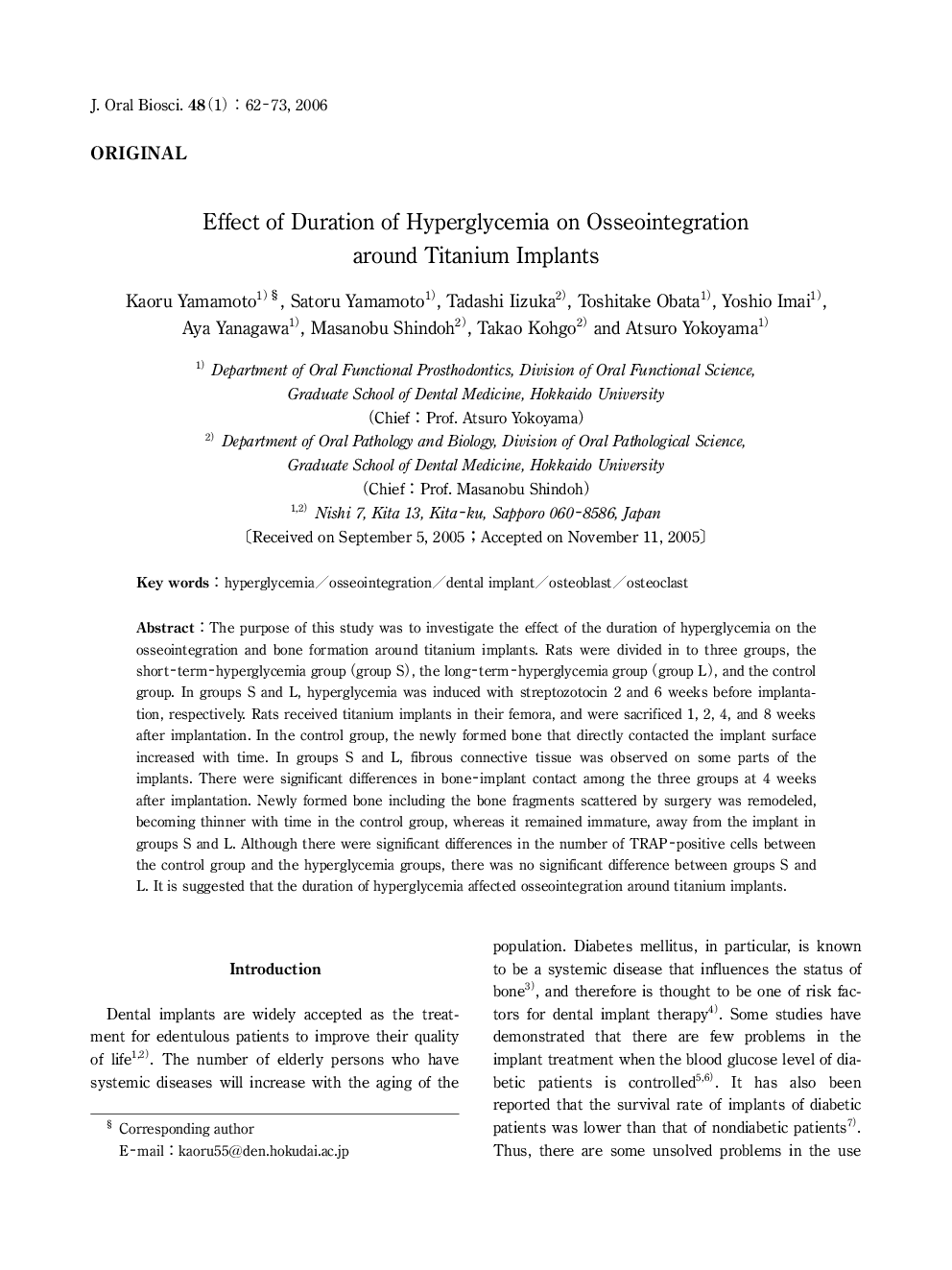| Article ID | Journal | Published Year | Pages | File Type |
|---|---|---|---|---|
| 2777149 | Journal of Oral Biosciences | 2006 | 12 Pages |
The purpose of this study was to investigate the effect of the duration of hyperglycemia on the osseointegration and bone formation around titanium implants. Rats were divided in to three groups, the short-term-hyperglycemia group (group S), the long-term-hyperglycemia group (group L), and the control group. In groups S and L, hyperglycemia was induced with streptozotocin 2 and 6 weeks before implantation, respectively. Rats received titanium implants in their femora, and were sacrificed 1, 2, 4, and 8 weeks after implantation. In the control group, the newly formed bone that directly contacted the implant surface increased with time. In groups S and L, fibrous connective tissue was observed on some parts of the implants. There were significant differences in bone-implant contact among the three groups at 4 weeks after implantation. Newly formed bone including the bone fragments scattered by surgery was remodeled, becoming thinner with time in the control group, whereas it remained immature, away from the implant in groups S and L. Although there were significant differences in the number of TRAP-positive cells between the control group and the hyperglycemia groups, there was no significant difference between groups S and L. It is suggested that the duration of hyperglycemia affected osseointegration around titanium implants.
